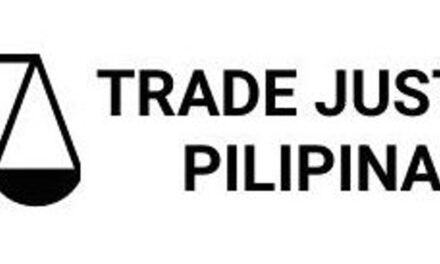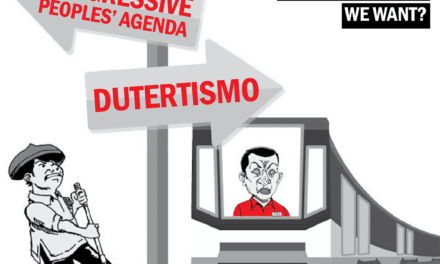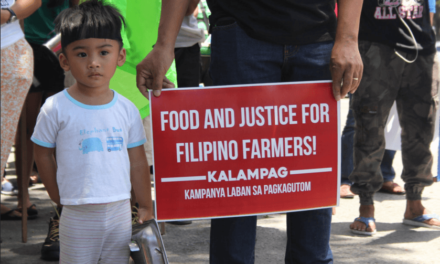By Ma. Ceres P. Doyo
posted on inquirer.net
“All our fears have come true,” said Akbayan party-list Rep. Walden Bello, reacting to the launch of the world’s biggest free trade area comprising China and the Association of Southeast Asian Nations (ASEAN) on Jan. 1
The China-Asean Free Trade Agreement (CAFTA), lauded by governments as a spur to intraregional trade and investments, cuts import tariffs on about 90 percent of products and offers members access to a combined market of 1.7 billion consumers. CAFTA is bigger than the European Union and the North American FTA in terms of trade value and population involved. But it has its detractors.
“We have warned against the detrimental effects of free trade agreements with strong economic powers like China, Japan, the US and Europe,” said Bello. “Unfortunately, all our fears have come true.
Bello’s credentials
The author of 15 books, Bello is a senior analyst at the Focus for the Global South, a progressive international think-tank based in Bangkok. He is a professor (on leave) of sociology at the University of the Philippines and visiting professor at several US universities. His latest book is “Deglobalization: Ideas for a New World Economy.”
“ASEAN has not yet managed to consolidate itself as an economic bloc,” Bello told the Inquirer.
“Yet here we are launching a free trade area with China that will mean eventually bringing our tariffs down to zero. ASEAN is already noncompetitive with China across a whole range of manufactured goods and agricultural products.”
China zooms past US
Agence France-Presse quoted Sundram Pushpanatham, deputy secretary general for the ASEAN Economic Community, as saying that China had just overtaken the United States as ASEAN’s third largest trading partner and would likely leap past Japan and the EU to become Southeast Asia’s number one market within the first few years of the FTA.
Under the agreement, the six founding members of Asean—the Philippines, Malaysia, Indonesia, Brunei, Singapore and Thailand—and China will drop tariffs on ASEAN goods from 9.8 percent to 0.1 percent, while ASEAN countries will cut tariffs on Chinese goods from 12.8 percent to 0.6 percent. Other ASEAN members, Vietnam and Cambodia among them, have until 2015 to open up.
CAFTA, eight years in the making, is seen by its promoters as an answer to the slowdown in export-led growth. The deadlock in the Uruguay round of global trade talks has given rise to other regional trade blocs. The decline of the US market has also made privileged access to the China market more appealing to emerging economies.
But Bello warned: “The China-Asean free trade area will mean acceleration of the erosion of our industry and agriculture owing to very cheap Chinese goods, at the same time that investments will be flowing to China.”
Not ready to compete
While proponents of CAFTA point to its benefits, some Philippine and Indonesian manufacturers said they were still not ready to compete with very cheap Chinese goods. Textiles and footwear companies are some examples.
“Our World Trade Organization commitments together with FTA’s are bringing our economy to its knees, but successive administrations have simply refused to see the handwriting on the wall,” Bello said.
“Labor export simply is no substitute for a domestic economy that is healthy and able to absorb our growing population.”
‘Path to economic ruin’
In his article, “China and Southeast Asia: Emerging Problems in an Economic Relationship,” Bello said China’s rapid growth is often presented as the engine driving Southeast Asian economies but, as the example of the Thailand-China ‘early harvest’ FTA shows, “complete trade liberalization can be a path to economic ruin.”
At first glance, Bello said, it seemed that the China-ASEAN relationship was positive. After all, he added, demand from a Chinese economy growing at breakneck pace was a key factor in Southeast Asian growth beginning around 2003 after a period of low growth dependent on domestic demand.
But, Bello said, the picture is more complex than that of a Chinese locomotive pulling the rest of Southeast Asia along with it to economic nirvana. There have been widespread fears, Bello said that China’s growth was, in fact taking place at Southeast Asia’s expense.





![[IN PHOTOS] In Defense of Human Rights and Dignity Movement (iDEFEND) Mobilization on the fourth State of the Nation Address (SONA) of Ferdinand Marcos, Jr.](https://focusweb.org/wp-content/uploads/2025/07/1-150x150.jpg)



